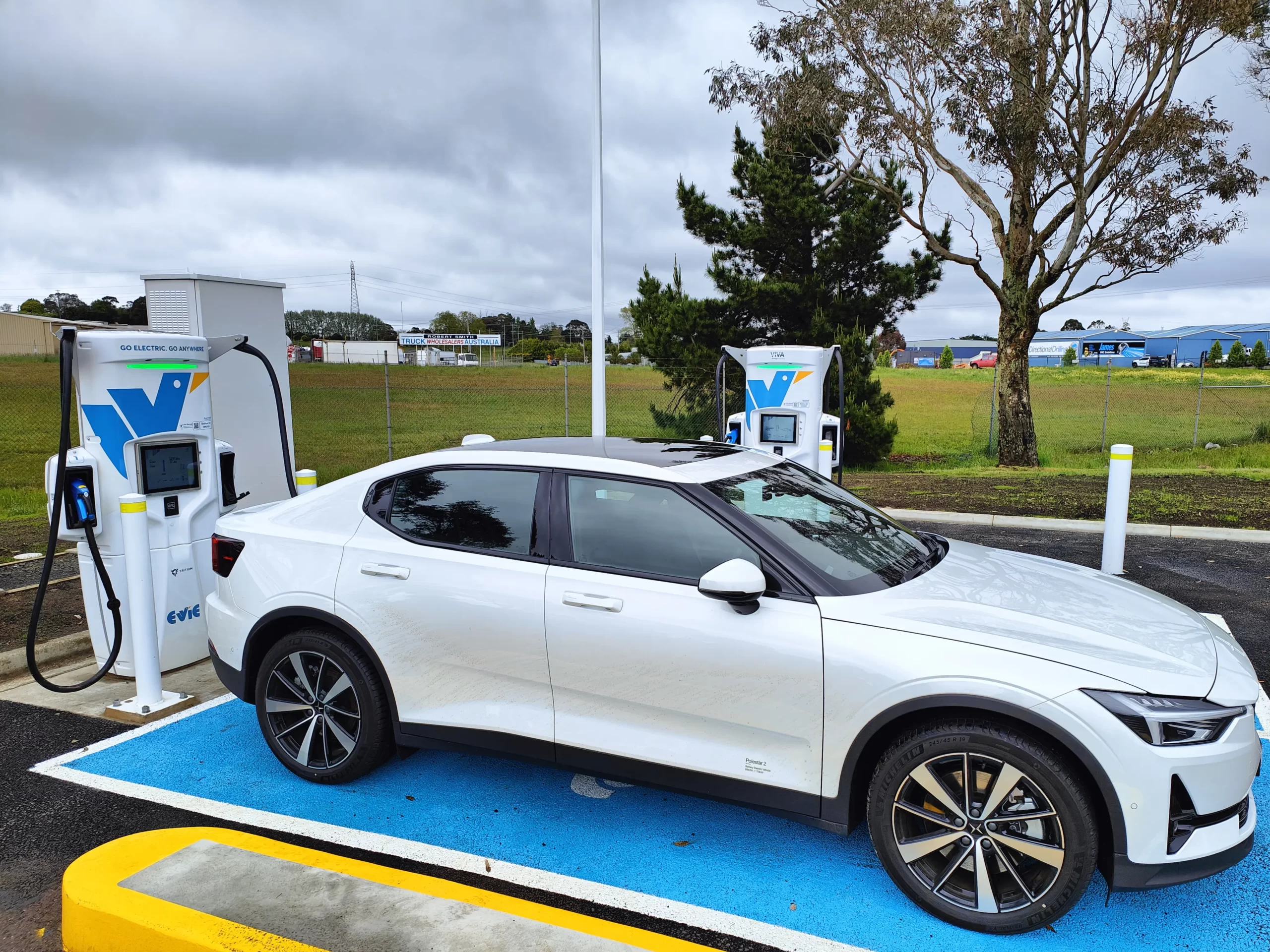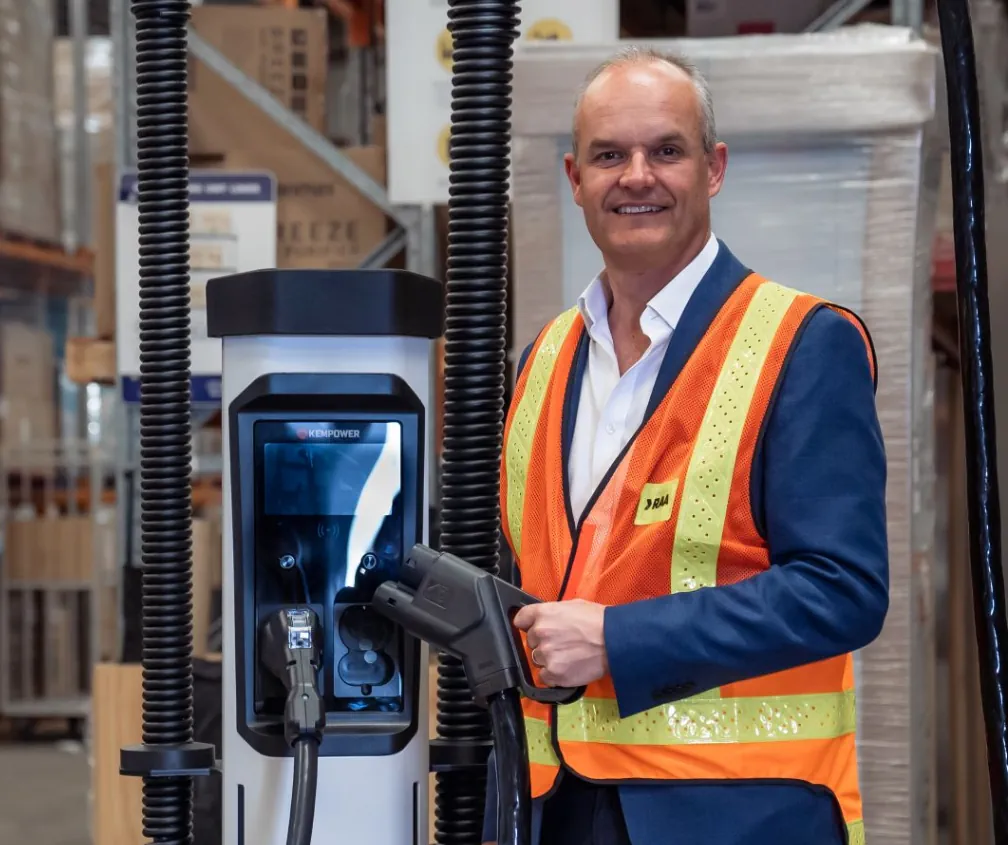Australia’s public DC fast charging network for electric cars and other electric vehicles is expanding and experiencing growing pains.
EV charge hell – not only does NSW lack charge sites, but many are broken. Today between Sydney & the QLD border nearly half the fast chargers are broken. @EvieNetworks @Chargefox thankyou for investing but this is a #EVchargefail (like that shown by @PhilWilliamsABC).
— Darren Wickham (@darrenwickham99) January 3, 2023
Charger Anxiety – will you get there and find out it’s broken?
Many electric car drivers feel like it’s common to reach a DC fast charging site and find some of the chargers are broken down eg: these screenshots below which I took a few minutes ago.
Who is Tritium?
Tritium is a company originally founded in Australia that now manufactures DC fast chargers installed across the world for refueling electric vehicles.
The brand will be familiar to Australian electric car owners because so far most of the public DC fast chargers installed in our country have been made by Tritium eg my photos below of Evie Taylors Lakes and Chargefox Barnawartha North.
Why do Tritium Chargers seem like they’re often out of order? It’s complicated
Speaking to the Daily Telegraph recently an NRMA spokesperson said they were replacing whole Tritium charging stations rather than waiting for replacement parts:
“There have been delays with parts due to global supply issues. The company has not been able to get them … we’re actually replacing them rather than waiting for them to be fixed”.
The chief executive of Tritium, Jane Hunter responded saying
“There’s no doubt that we would have had shortages on semiconductors during the thick of Covid. I would say that those are now getting better and better”.
“We’re more desperate than anybody for it to become a phenomenal user experience because it’s our hardware that wears the negative connotations and we want it to be super successful”.
Hunter said Tritium products were reliable and the real problem was that electric charging networks aren’t signing up for Tritium service agreements to ensure repairs are done quickly and downtime was much shorter.


It is not surprising that Australia’s two biggest open DC electric fast charging networks use Tritium.
Evie Networks gained most (all?) of it’s funding from Australian energy baron Trevor St Baker, who also invested early in Tritium and still holds a substantial stake in it. If I owned a stake in two companies which operate in the same industry I’d encourage them to work together.
Chargefox was founded by Tim Washington who also founded Jet Charge, Australia’s biggest installer of charging stations. Australia’s EV industry is pretty small so it’s not surprising that Jet Charge has mostly installed Tritium DC chargers to date.

What’s the solution to get more reliable DC electric car fast chargers?
There are lots of ways to make Australia’s DC electric fast charger network more reliable:
- Charging networks and Governments – need to have a minimum of two charging stations at any location outside big cities. It would be better redundancy to have two 75kW than one 150kw station or instead of one 350kW have two 150Kw stations. Currently there are quite a few single charging station locations and if they’re broken drivers often have to travel 50-100km to the next location.
- Charging networks – need to sign up for SLA’s with their charging station manufacturer/installer so that repairs are done quickly or penalties will need to be paid
- Governments – should make sure their grants for new charger locations require a specific minimum up time eg: 95% or penalties will need to be paid
- Governments – should require any large rollout of charging stations that they part fund should have a mixture of 2 different charger manufacturers used from the options of Tritium, ABB, Kempower etc
- Governments – need to make most of the charging plugs CCS 2, rather than the current situation where many charger locations have 50% CHAdeMO and 50% CCS 2. This would reflect the reality that 90%+ of Australia’s electric cars have CCS 2 ports and only a minority of Nissan and Mitsubishi drivers use CHAdeMO .
Australians will find out soon whether ABB and Kempower are more reliable than Tritium
I noticed during my recent first visit of an Ampol AMPCharge charger at Alexandria, Sydney that they have chosen ABB as their charging station provider.
The RAA recently chose Kempower as the provider of their new 50 DC rapid charging sites to be installed across South Australia.
Further to the west, WA power distributors Horizon Power and Synergy recently announced that their hardware contract has been awarded to JET Charge who will be providing Kempower, Tritium and ChargeMate chargers for installation across the state. The software and charger management will be done by Chargefox.
Over time we will see if these other brands are more reliable than the other locations using Tritium chargers.



Leave a Reply